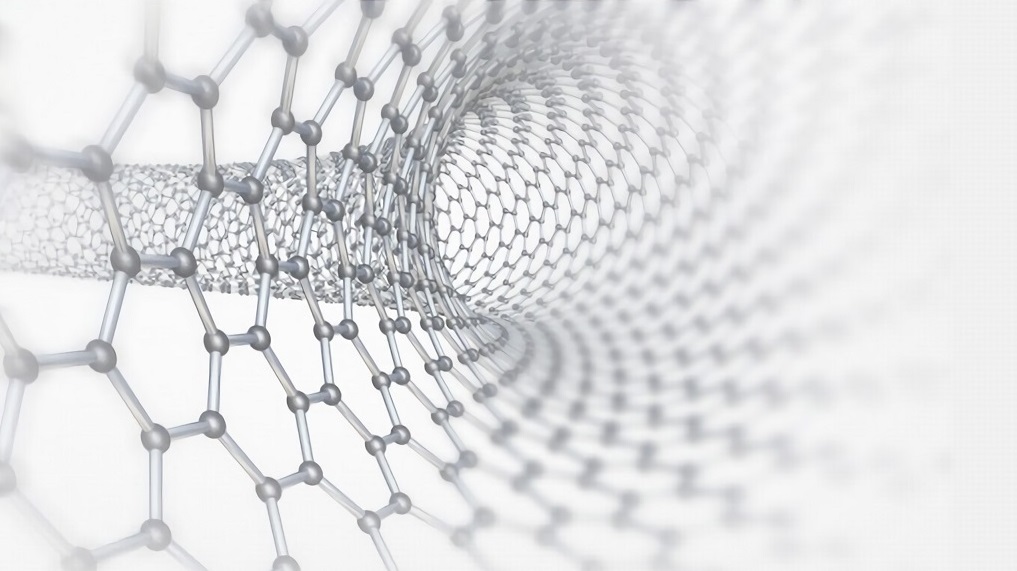

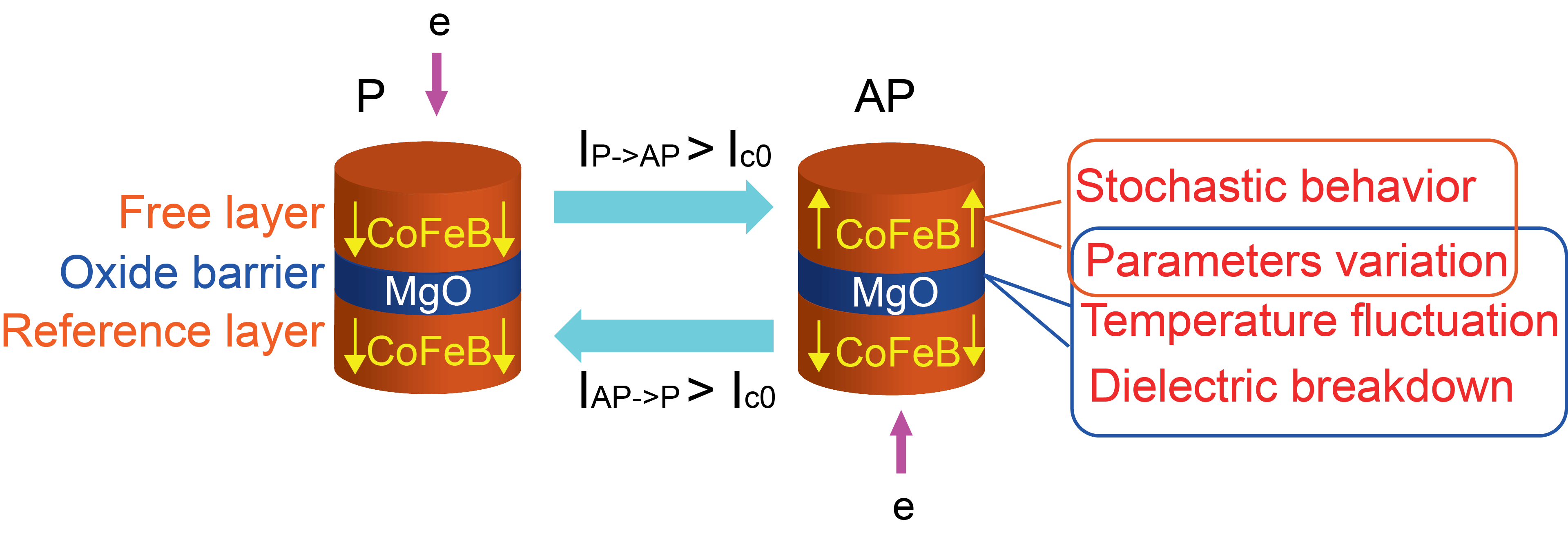
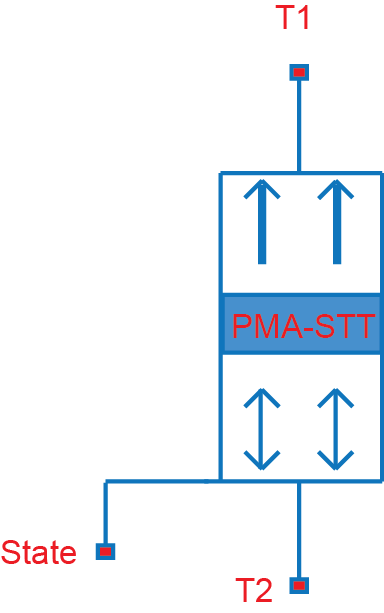
Magnetic tunnel junctions (MTJs) composed of ferromagnetic layers with perpendicular magnetic anisotropy (PMA) are of great interest for achieving high-density non-volatile memory and logic chips owing to its scalability potential together with high thermal stability. Recent progress has demonstrated a capacity for high speed performance and low power consumption through current-induced magnetization switching. In this manual, we present the utilization of a compact model of CoFeB/MgO PMA MTJ, a system exhibiting the best tunnel magneto-resistance ratio and switching performance. The MTJ structure consists of, from the substrate side, Ta(5)/Ru(10)/Ta(5)/Co20Fe60B20(1.3)/MgO(0.85)/Co20Fe60B20(1.3)/Ta(5)/Ru(5) (numbers are nominal thicknesses in nanometers). It integrates the physical models of static, dynamic and stochastic behaviors; many experimental parameters are directly included to improve the agreement of simulation with measurements.
1. Fert Beijing Institute, BDBC and School of Electronic and Information Engineering, Beihang Univeristy, Beijing 100191, China
2. Institut d'Electronique Fondamentale, CNRS UMR 8622, University of Paris-Sud 11, 91405 Orsay, France
3. Departement Communications et Electronique, Telecom-ParisTech, Universite Paris-Saclay 75013, France
Download model file (Click to see download counts)
Download manual file (Click to see download counts)
NOTICE: if you cannot download with Chrome, please allow the pop-up window to be shown for this site, or open the download link in a new tab. If neither of the option work, please try to use internet explorer to download.
1. Y. Zhang, B. Yan, W. Kang, Y. Cheng, JO. Klein, Y. Zhang, Y. Chen, W. Zhao, Compact Model of Subvolume MTJ and Its Design Application at Nanoscale Technology Nodes, IEEE Transactions on Electron Device, 2015, 62:2048-2055. DOI: 10.1109/TED.2015.2414721
2. Y. Wang, H. Cai, L. Naviner, Y. Zhang, X. Zhao, E. Deng, JO. Klein, W. Zhao, "Compact model of dielectric breakdown in spin transfer torque magnetic tunnel junction", IEEE Trans. on Electron Devices, Vol. 63, 4, pp. 1762-1767, 2016. DOI: 10.1109/TED.2016.2533438
3. Y. Wang, Y. Zhang, E. Deng, JO. Klein, L. Naviner, W. Zhao, "Compact model of magnetic tunnel junction with stochastic spin transfer torque switching for reliability analyses", Microelectronics Reliability, Vol. 54, 9, pp. 1774-1778, 2014. DOI: 10.1016/j.microrel.2014.07.019
4. Y. Wang, H. Cai, L. Naviner, Y. Zhang, JO. Klein, W. Zhao, "Compact thermal modeling of spin transfer torque magnetic tunnel junction", Microelectronics Reliability, Vol. 55, 9, pp. 1649-1653, 2015. DOI: 10.1016/j.microrel.2015.06.029
5. H. Cai, Y. Wang, L. Naviner, W. Zhao, "Robust Ultra-Low Power Non-Volatile Logic-in-Memory Circuits in FD-SOI Technology", IEEE Trans. on Circuits and Systems I, Vol. 64, 4, pp. 847-857, 2017. DOI: 10.1109/TCSI.2016.2621344
Q1. A following error occurs:

A1. There was an issue with the VerilogA parser in MMSIM10.1 which meant that it mistakenly identified this cds_inherited_param as a normal parameter.
The method of deletion is as follows:
(1) Open Tools->CDF->Edit in the CIW
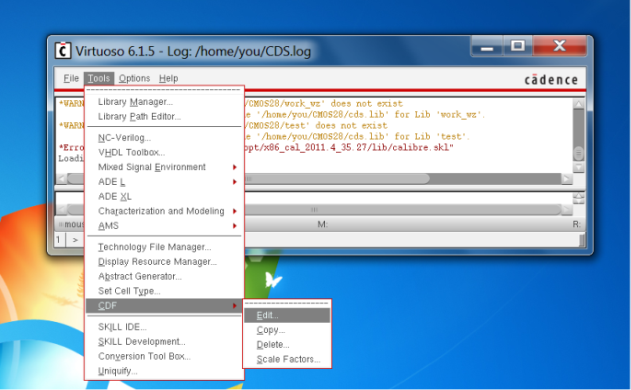
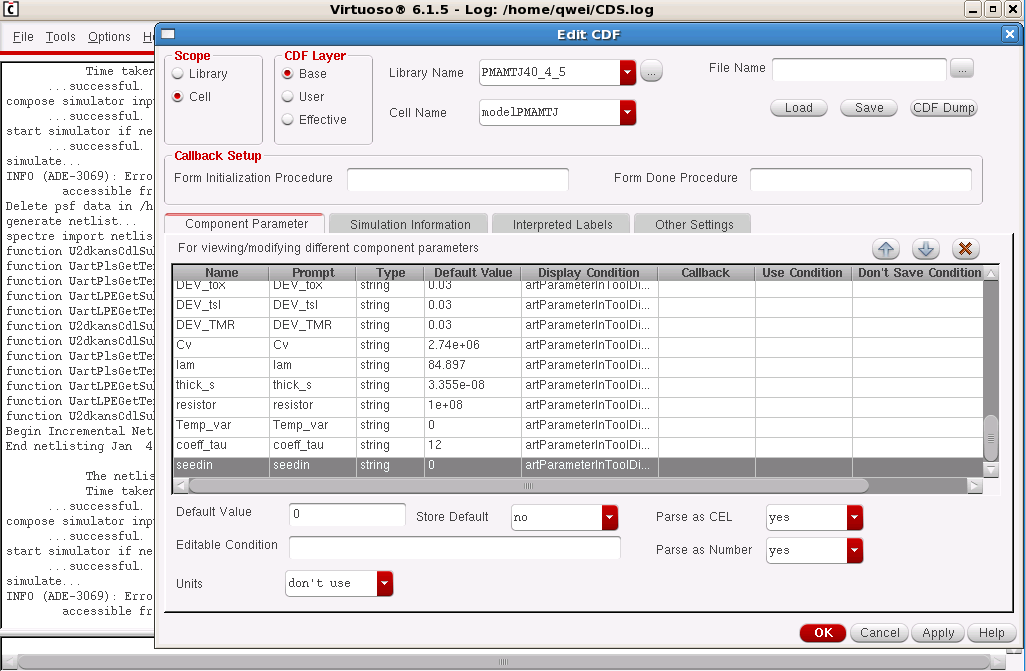
Have any other questions? Send an e-mail to us!